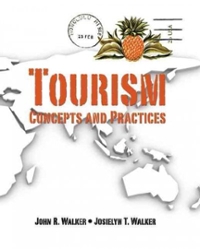Question
11. Which barrier to entry uses cost advantages associated with large size? A) rivalry among existing firms B) switching costs C) cost disadvantages independent of
11. Which barrier to entry uses cost advantages associated with large size? A) rivalry among existing firms B) switching costs C) cost disadvantages independent of size D) capital requirements E) economies of scale
12. Which barrier to entry uses cost advantages NOT easily imitated by new entrants such as patents on proprietary product knowledge or government subsidies? A) government policy
B) switching costs C) cost disadvantages independent of size
D) capital requirements E) economies of scale
13. When one corporation follows the actions of other companies due to competitive activity such as price reduction, this increases the A) rivalry among existing firms.
B) rivalry among bankrupt firms.
C) threat of new entrants. D) threat of substitute products.
E) threatofsubstituteservices.
14. Which of the following is NOT descriptive of "rivalry among existing firms?" A) Industry growth is slow, generating fights for market share by expansion-oriented companies. B) Fixed costs are high or the product is perishable. C) Capacity is normally added in large increments. D) Competitors are either numerous or roughly equal in size and power. E) A competitive move by one firm will not have a noticeable effect on its competitors.
15. Which of the following is NOT descriptive of "threat of substitute products or services?" A) Substitute products appear to be different, but satisfy the same need as another product. B) If the cost of switching is low, substitutes may have a strong effect on an industry. C) Competition occurs only with those corporations within an industry. D) Possible substitute products or services may not appear to be easily substitutable. E) Substitutes limit the potential returns of an industry.
16. A sugar company worried that consumers may buy artificial sweetener instead of sugar is concerned about the A) threat of new entrants. B) rivalry among existing firms.
C) threat of substitute products.
D) bargaining power of suppliers.
E) bargaining power of buyers.
17. Which of the following is NOT descriptive of the "bargaining powers of buyers?" A) Changing suppliers costs very little. B) Alternative suppliers are plentiful because of standardization.
C) The purchased product represents a high percentage of buyer's costs. D) The buyer buys in large proportion of seller's product or service. E) Theproductearnshighprofitsandisvery insensitive to costs and service differences.
18. Which of the following is NOT descriptive of the "bargaining power of suppliers?" A) Substitutesarereadilyavailable. B) Theproductorserviceisunique. C) The supplier industry is dominated by a few companies, but sells to many. D) The purchasing industry buys only a small portion of the supplier group's goods and services. E) Suppliers are able to integrate forward and compete directly with their present customers.
19. Which force places a ceiling on the price firms in an industry can probably charge? A) threat of new entrants B) threat of substitutes C) bargaining power of buyers D) bargaining power of suppliers E) rivalry among existing firms
20. Other software companies could not compete with Microsoft based on the hesitation of buyers to try a new software, which resulted in the A) threat of new entrants. B) bargaining power of buyers. C) threat of substitutes. D) bargaining power of suppliers. E) rivalry among existing firms.
Step by Step Solution
There are 3 Steps involved in it
Step: 1

Get Instant Access to Expert-Tailored Solutions
See step-by-step solutions with expert insights and AI powered tools for academic success
Step: 2

Step: 3

Ace Your Homework with AI
Get the answers you need in no time with our AI-driven, step-by-step assistance
Get Started


